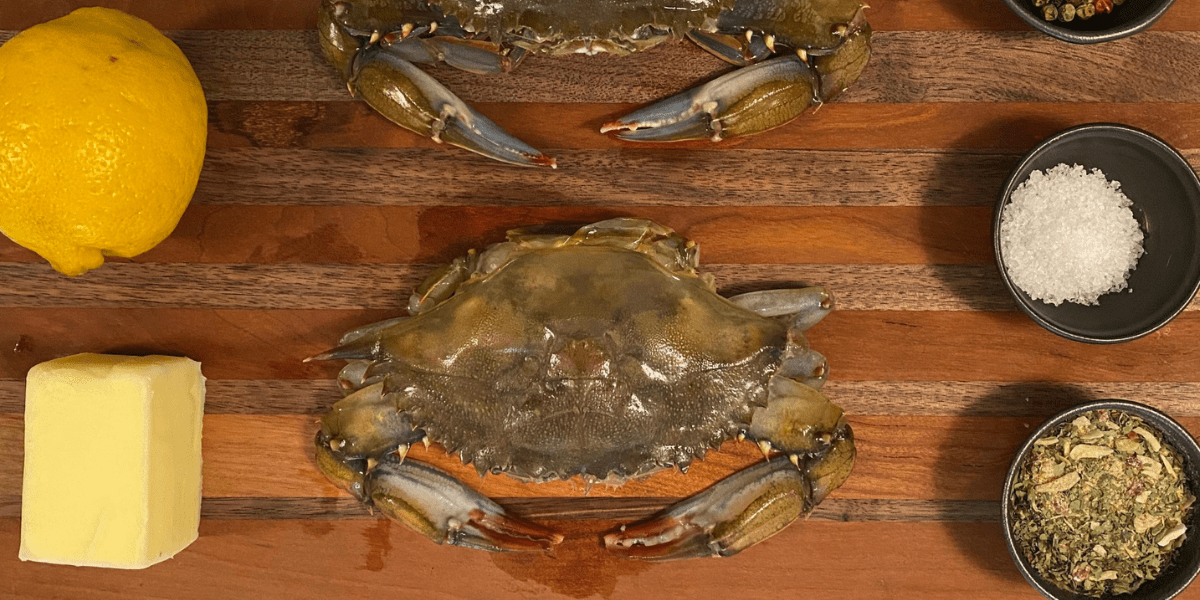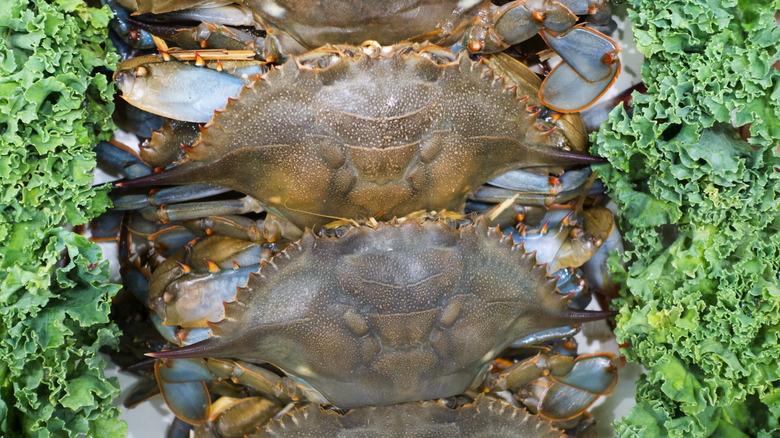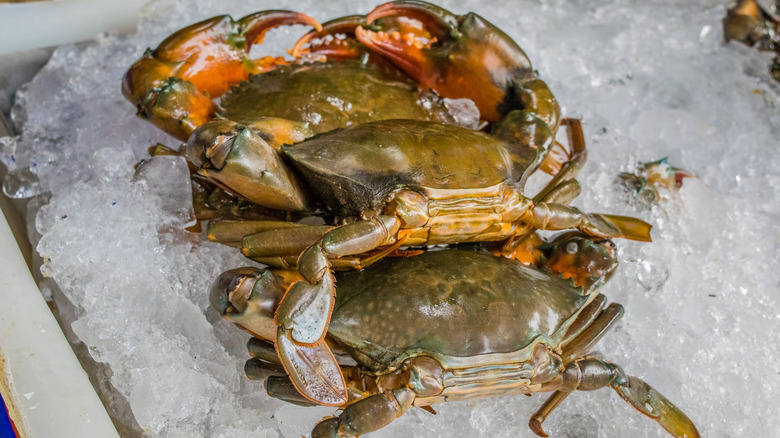Soft shell crabs are a delicious seasonal delicacy enjoyed by seafood lovers along the East and Gulf coasts Their mild, sweet flavor and soft crunch make them a unique eating experience. But if you’re new to eating soft shell crabs, you may have some questions about how to actually eat them. In this detailed guide, I’ll walk through everything you need to know about eating soft shell crabs, from what they are to how to cook and eat them.
What are Soft Shell Crabs?
Soft shell crabs are simply blue crabs that have recently molted their outer shell. Blue crabs molt their hard exoskeleton periodically in order to grow. After molting, it takes 1-7 hours for the new shell to harden, leaving a brief window where the crab’s shell is still soft. Fishermen are able to capture crabs during this phase to bring to market as “soft shell crabs.” So while they may look strange soft shell crabs are just regular blue crabs in a transitional state.
Other species of crab around the world also molt and can be eaten in their soft shell state like the Italian moeche crab. But the blue crab is the preferred species for soft shell crab production in the U.S. due to its larger size and abundance.
When is Soft Shell Crab Season?
The availability of soft shell crabs is dependent on crabs molting, which happens in warmer waters. So soft shell crab season runs from early spring through summer.
-
The season starts as early as April in the South (Florida, Louisiana).
-
It progresses north up the East Coast through May and peaks in June.
-
By the end of July, the season starts winding down and finishes by September.
Soft shell crabs can be found frozen outside of season, but they are best sourced fresh during peak season. Look for soft shells at local fish markets or specialty seafood stores.
How are Soft Shell Crabs Harvested and Prepared?
Harvesting soft shell crabs requires a unique process:
-
Fishermen catch regular hard shell crabs in traps and transfer them to holding tanks.
-
In the tanks, they monitor the crabs for early signs they are about to molt or “peel,” like new shell growth under the old shell.
-
Right after the crab molts its old shell, fishermen harvest the soft crabs, before their new shell fully hardens.
-
They typically wait 1-2 hours after molting before harvesting, so the fragile crabs aren’t damaged during processing.
-
The crabs are cleaned by removing the lungs, mouth parts, eyes, and abdomen. This prepares them for cooking.
-
The whole cleaned crab is then ready to be cooked and eaten shell and all!
How to Buy Soft Shell Crabs
There are a few options when buying soft shells:
-
Live crabs – highest quality but have a short 1-2 day shelf life
-
Fresh dressed crabs – cleaned and ready to cook but only last 1-2 days
-
Frozen dressed crabs – can be shipped and stored longer while maintaining quality
No matter what form you buy, make sure soft shell crabs smell fresh, not fishy or ammonia-like. Discoloration or an unpleasant odor means they are spoiled. For live crabs, they should be active. For dressed crabs, the shell should look moist.
Buying frozen soft shells is a good option for inland areas without access to fresh seafood. High quality frozen soft shells are processed right at their prime.
How to Cook Soft Shell Crabs
The most popular cooking method for soft shell crabs is frying:
-
Many chefs recommend a simple flour coating before pan frying in oil or butter until crispy.
-
For more flavor, try a seasoned cornmeal coating. Old Bay and Cajun seasoning work well.
-
Deep frying also yields a crispy soft shell, just be careful not to overcook them.
-
Pan or deep frying at high heat for 2-3 minutes per side is ideal.
Other cooking methods like sautéing, grilling or baking are also options. Just avoid overcooking.
What Does a Soft Shell Crab Taste Like?
The taste of soft shell crab is similar to regular blue crab, but more mild and slightly sweet. You’ll get notes of brine and seafood along with a soft crunch from the shell. The shell adds textural complexity while the seasoning/coating provides another layer of flavor. Overall soft shells offer a delicate crab flavor compared to the richer taste of hard shell crab meat.
Can You Eat the Whole Soft Shell Crab?
Yes, you can and should eat the entire soft shell crab! Since the crabs are harvested immediately after molting, their new shell is soft enough to eat. The shell has a soft crunch similar to a potato chip. All the crab’s guts and unwanted parts are removed before cooking as well. So every part of the crab that reaches your plate is edible. Eating the shell is part of the fun of soft shell crabs.
Step-by-Step Guide to Eating Soft Shell Crabs
Here is a simple walkthrough for eating soft shell crabs:
-
Pick up the crab with your hands and take a first bite from the leg or body.
-
Continue biting and tearing off pieces of the crab, shell and all.
-
The shell should peel off fairly easily with each bite.
-
The legs can be eaten just like wings or drumsticks.
-
Feel free to pick up and eat with your hands for the full experience!
-
A fork can also be used if needed, though the shell makes cutting tricky. Just use your hands to peel off shell if needed when using a fork.
-
Eat any accompaniments along with the crab for flavor balance, like dipping pieces in sauce.
-
Enjoy the unique flavors and textures in each bite!
Nutrition Info for Soft Shell Crabs
Soft shell crabs are high in protein, minerals like calcium and potassium, and vitamin B12. A 3 oz serving of fried soft shells contains:
- Calories: 190
- Fat: 12g
- Carbs: 7g
- Protein: 12g
- Sodium: 430mg
So soft shell crabs make a nutritious, low-carb meal. Just watch your portion size due to the high cholesterol (over 100mg per serving).
Tasty Soft Shell Crab Recipe Ideas
Beyond the classic fried soft shell, there are many creative ways to eat soft shells:
- Soft shell crab po’ boy sandwich
- Soft shell tacos with cabbage slaw
- Baked soft shells with lemon-herb butter
- Soft shell crab salad with avocado
- Blackened soft shells with remoulade
- Soft shell crab rolls with yuzu aioli
A little creativity can go a long way with soft shells! The possibilities are endless.
So don’t be intimidated by the unusual appearance of soft shell crabs. Follow this guide and you’ll be eating these delectable seasonal crabs like a pro in no time. Savor the soft crunch and delicate sweetness that makes soft shells a cherished warm weather tradition.

Where to buy soft-shell crabs

When in season, soft-shell crabs are readily available at local seafood markets and sometimes even major supermarket chains. They are sold either live or “dressed.” Live soft shells should be kept alive until ready to cook, while “dressed” ones (meaning they are killed and cleaned) are ready to cook without the extra hassle of having to butcher the crabs yourself. Fresh soft-shell crabs are an incredibly time-sensitive ingredient. Locals Seafood recommends buying soft-shell crabs the day you plan to cook them, as both live and dressed crabs can only last one to two days at most in your fridge.
Given the short shelf life of fresh crabs, frozen soft shells may be a great alternative for those who want to try these crustaceans but cant easily access live ones. A handful of seafood companies now sell frozen soft-shell crabs and will ship them all over the country, including to inland areas that dont often get much fresh seafood. Harvey supports the process of flash-freezing soft-shell crabs at their peak quality. He explains, “Freezing extends their shelf life, but it also elongates the season past their typical availability.”
When can you buy soft-shell crabs?

While advancements in food technology have made it so you could, in theory, buy soft-shell crabs all year round, they are going to be most readily available when they are in the harvest season.
Soft-shell crab season runs from late spring through the summer (via National Geographic). According to Harvey, “The first soft-shells of the year appear as early as mid-April, but generally by the beginning of May at the latest. The season hits its peak in June and then starts to decline. By the end of July, the season has generally come to an end.” While there are still crabs available in August and September in some places, they are much rarer.
Folklore has long claimed that crabs molt in sync with the moon phases, but that is just an old wives tale. Harvey instead explains how the molting is related to ocean temperatures. When the ocean waters warm, the crabs start to molt. The season begins down in Louisiana and Florida (where the temperature rises first) and then travels from Georgia up the Atlantic coast. Because the crabs molting period starts at different times based on location, the season lasts longer than the typical six-to-8-week molting period.
How to Cook & Eat Softshell Crabs
FAQ
Do you eat an entire soft shell crab?
Yes, you generally eat the whole soft shell crab, including the shell, after it has been cleaned. Soft shell crabs are blue crabs that have recently molted their hard outer shell and are caught during this brief, soft-shelled period.
Can you eat the yellow stuff in soft shell crab?
When eating soft shell crabs, you typically do not eat the guts, which are often referred to as the “crab mustard.” While some people do enjoy this part, as it can have a rich flavor, others prefer to remove it due to its texture and potential for a stronger taste.
Do you eat the claws on soft shell crab?
Minus the few bits that are removed during preparation, you can eat everything on the crab, “shell, claws, and all.’‘ Even better, because they are young and tasty, soft-shell crabs are usually high quality, saving you the trouble of figuring out how to use low-quality crab meat.
What part of a crab can’t you eat?
Thankfully, nearly every part of a crab can be eaten, with one exception: the lungs or gills, aka “The Devil’s Fingers.” Despite the myth that they’re harmful to eat, crab lungs are not inherently toxic. The real reason to steer clear of them is that they just don’t taste good.
